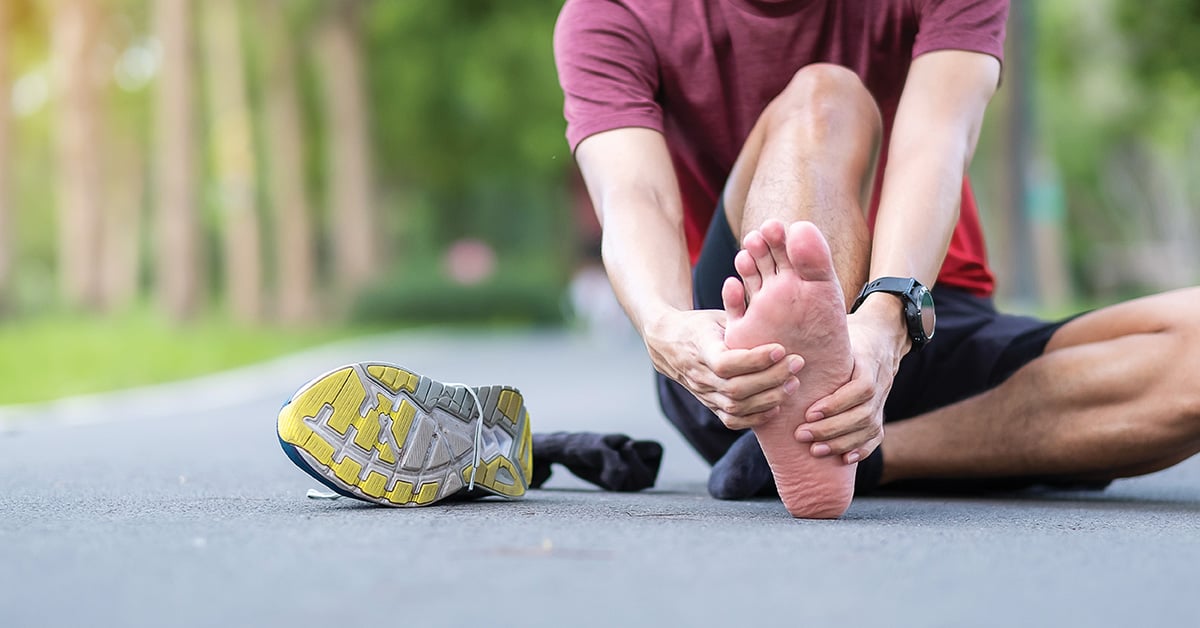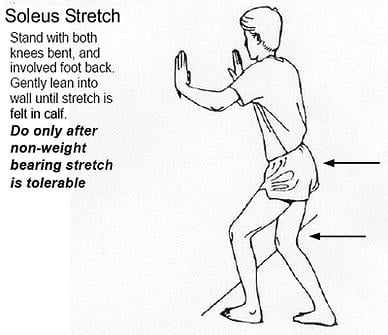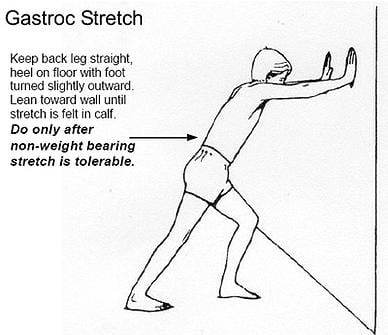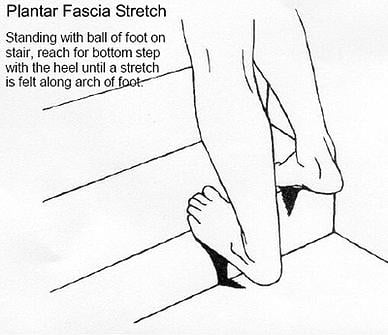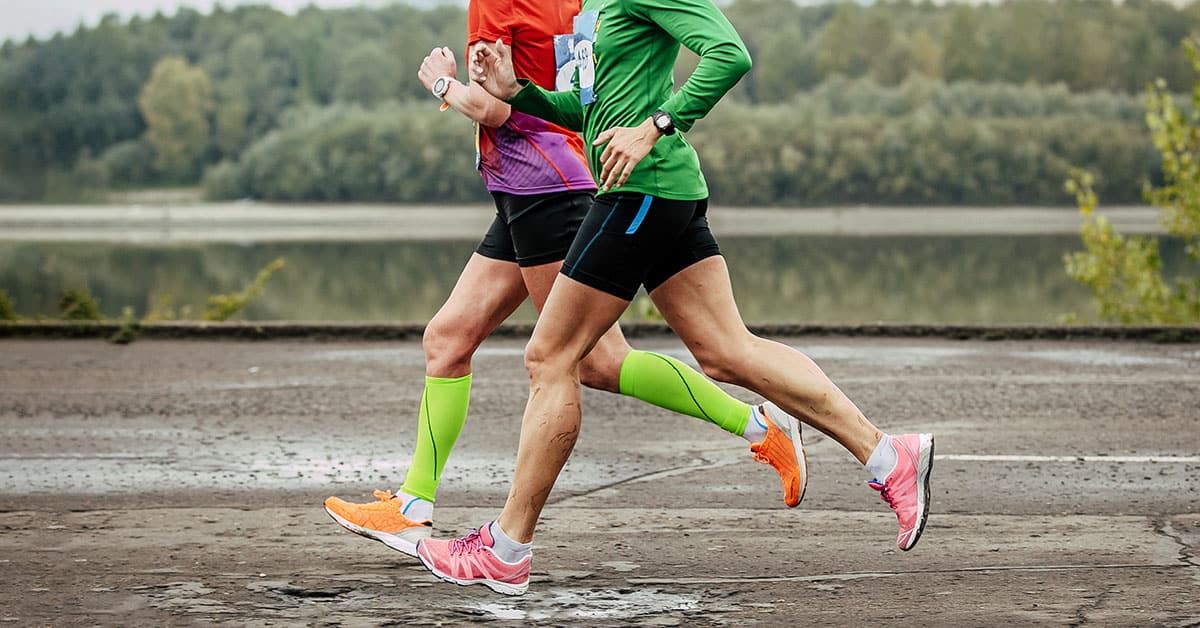Plantar Fasciitis: Common Running Injuries
Plantar fasciitis is one of the most common injuries among runners. It involves the inflammation of a thick band of tissue that runs across the bottom of your foot and connects your heel bone to your toes (plantar fascia). When dealing with plantar fasciitis, most will feel a stabbing pain that usually occurs with your first steps out of bed each morning. As you get up and move around, the pain normally decreases, but it might return after running or walking a long-distance or standing for long periods of time.
As always, you can certainly read through the information and tips outlined in this article. However, if you are suffering from Plantar Fasciitis, it is recommended that you seek the help of a licensed practitioner.
Definitions of Plantar Fasciitis and Heel Spur Injuries:
PLANTAR FASCIITIS:
- Inflammation of the connective tissue of the bottom of the foot.
- Plantar = bottom of the foot, Fascia = dense fibrous connective tissue, Itis = inflammation.
- The plantar fascia attaches to the bottom of the heel bone and fans out to the toes.
- The plantar fascia is designed to support the foot and form the arch. It has very little elasticity and is very thick.
HEEL SPURS:
- A heel spur is an abnormal growth of bone on the heel due to excessive stress or pulling where the plantar fascia attaches to the heel.
- The excessive tugging of the plantar fascia on the heel bone causes this excess of bone (bone spur) to grow in a pointed fashion toward the toes.
Where Plantar Fasciitis Hurts and How it Feels:
- Plantar fasciitis typically causes stabbing pain in the bottom of your foot near the heel.
- Heel spurs are often painless but can be associated with heel pain and connected to feelings in plantar fasciitis.
Causes:
EXCESSIVE PRONATION
- Pronation is a normal movement of the foot, that allows the arch to flatten to a degree, which helps the body to absorb shock and adapt to different ground surfaces.
- In analyzing one’s gait, the first contact is on the heel and outside of the foot; followed by a shift of body weight continuing forward toward the arch and toes.
- If the foot is weak or tired and/or the footwear is not supportive, then the arch can flatten more than normal, which is excessive pronation.
- Flattening of the arch (excessive pronation) places pressure on the arch and stretches the plantar fascia(which supports the arch) and can create inflammation at the attachment on the heel.
- This repetitive, excessive pronation, is the main contributor to many lower extremity, overuse injuries, of which plantar fasciitis and heel spurs are the most common in the foot.
Contributing Factors:
- Age-With increasing age, often there is decreasing flexibility.
- Any sudden change in activity, specifically activities that increase weight-bearing or pressure on the foot.
- Changes in training-Increased toe running, speed of running, or hill running can add stress to the feet.
- Flat feet are most susceptible because of the lack of support. Rigid, high arched feet can be susceptible due to a lack of flexibility.
- A sudden increase in body weight (overweight or pregnancy) may also add strain.
- Poor support in the shoes being worn and/or the poor support inside the shoes can add to the stress on the foot.
- Biomechanical changes in the foot can cause increases in pronation (see Primary Causes).
Treatment and Prevention of Plantar Fasciitis:
THE FOLLOWING IS ADVICE MOST OFTEN GIVEN IN CURRENT LITERATURE.
- The 3S’s – Stretching, Strengthening, Supporting, along with ICE and REST, have been found to be the simplest and most effective treatments for these injuries.
- Stretching of the calf, Achilles tendon, and foot can help or eliminate the majority of plantar fasciitis.
- Strengthening the muscles of the foot and ankle can assist in eliminating and avoiding these problems.
- Supporting the foot with proper shoes and insoles can prevent or eliminate the vast majority of foot-related problems. This may be a Birkenstock sandal, with a broad base and contoured footbed, that is low to the ground and conforms to the foot. It may also be a shoe with an upper that wraps the foot and supports the arch and heel, thus limiting excessive pronation. The vast majority of footwear has more than enough cushion but very little support for the arch and heel. One of the easiest and most effective solutions is to add a simple over-the-counter insole that provides forgiving support for both the arch and heel.
- If you refer to HeelSpurs.com, you can see the results of 1300 respondents. Arch supports are recognized as the most successful remedy with stretching a close second
The following are a few helpful exercises. Check with your doctor for specifics on your condition and what you should or should not do for your problem.
Other Common Running Injury Articles – Achilles Tendon Injuries, Runner’s Knee, Shin Splints, and IT Band Syndrome.
A Training Plan that Works for You.
Our collection of running plans will help you train year-round. From 5k to a 100-mile ultramarathon, we have a training plan built for your experience level and goals. Every plan is delivered via Final Surge, allowing you to sync workouts across devices, receive daily reminders of workouts and activities, and analyze workout and target zone details. Get started today with a training plan built for you, view our running plans here.


